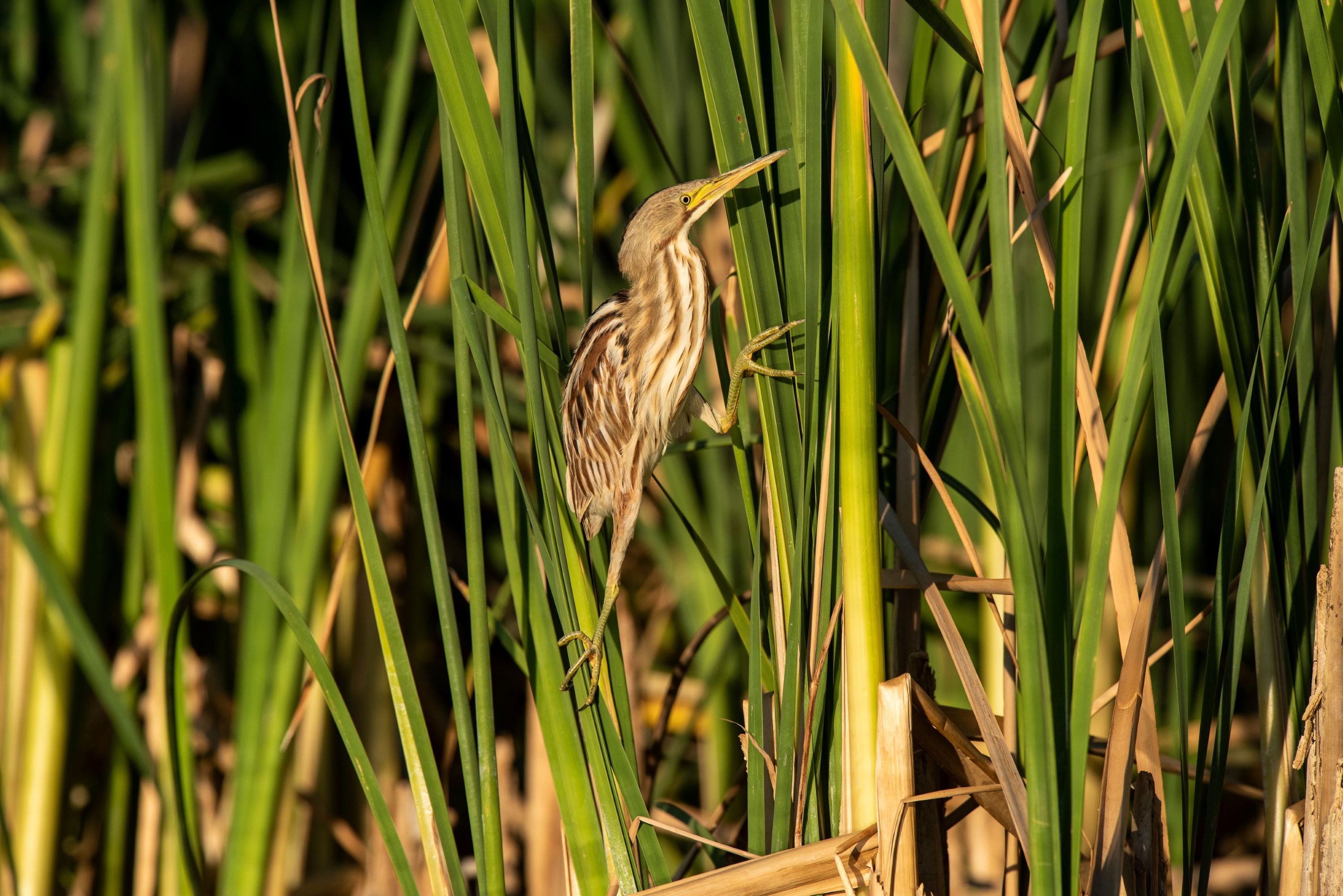
Stripe-backed Bittern: The Enigmatic Bird of South American Marshes
Introduction to the Stripe-backed Bittern
The Stripe-backed Bittern, known scientifically as Ixobrychus involucris, is a distinctive and elusive bird belonging to the family Ardeidae. This lesser-known species captivates bird enthusiasts with its unique striping and secretive habits, primarily inhabiting the marshy landscapes of South America.
Physical Description
The Stripe-backed Bittern is a medium-sized bittern, with a length ranging from 28 to 36 cm. It is characterized by its striking striped pattern on the back, which blends black, brown, and buff hues. The bird's underparts are lighter, typically a pale buff or cream color, providing it with excellent camouflage in reedy habitats. It possesses a stout body, a relatively short neck, and a sharp, pointed bill, common traits among bitterns.
Habitat and Distribution
This bittern is native to South America, with its range extending from Colombia and Venezuela to Brazil, Uruguay, and Argentina. It prefers freshwater marshes, swamps, and reed beds, particularly those with dense vegetation. The Stripe-backed Bittern's habitat choice is crucial for its feeding and breeding activities.
Behavior and Lifestyle
Known for its elusive behavior, the Stripe-backed Bittern is a master of camouflage. It spends much of its time hidden among tall reeds and grasses, making it a challenging bird to spot. This bittern is most active during dusk and dawn (crepuscular) and is also known to be active at night (nocturnal).
Feeding Habits
The diet of the Stripe-backed Bittern mainly consists of small fish, amphibians, and insects. Like other bitterns, it employs a 'stand and wait' hunting technique, capturing prey with sudden, swift strikes of its bill.
Breeding and Nesting Habits
The breeding habits of the Stripe-backed Bittern, while not extensively documented, involve nesting in dense marsh vegetation. The nests are typically built close to the ground or water surface and are made from surrounding reeds and grasses, camouflaged within the wetland environment.
Egg Laying and Incubation
The female lays a small clutch of eggs, usually 2 to 5 in number. The eggs are pale and blend with the marshland surroundings. The incubation period and the specific roles of the parents in nesting and chick-rearing are areas that require further study.
Chick Rearing and Parental Care
Chicks of the Stripe-backed Bittern are born altricial and require significant parental care. They are fed by both parents and grow rapidly, learning to fend for themselves and navigate the complexities of their marshland habitat.
Vocalizations and Communication
The vocalizations of the Stripe-backed Bittern include a series of low-pitched calls and sounds, especially pronounced during the breeding season. These vocalizations play a key role in territorial defense and mate attraction.
Conservation Status
The Stripe-backed Bittern is currently listed as Least Concern by the IUCN. However, like many wetland species, it faces threats from habitat loss and degradation, highlighting the need for conservation efforts to protect and manage these vital ecosystems.
Similar Species and Taxonomy
Belonging to the order Pelecaniformes and the family Ardeidae, the Stripe-backed Bittern is part of the genus Ixobrychus, known for small bittern species. It shares habitat preferences with other members of the genus but is distinguishable by its unique striped back and distribution in South America.
The Stripe-backed Bittern in Utah
The Stripe-backed Bittern is not found in Utah or elsewhere in North America; its range is limited to South America. Birdwatchers in Utah can observe other Ardeidae family members, such as the American Bittern, in local wetlands.
Conclusion
The Stripe-backed Bittern, Ixobrychus involucris, is a fascinating and elusive bird, embodying the mysterious allure of South American marshes. Its distinctive appearance, secretive nature, and specialized habitat preferences make it an intriguing subject for ornithological study and birdwatching. Preservation of wetland habitats is crucial for the survival of this and many other species, emphasizing the global importance of wetland conservation.